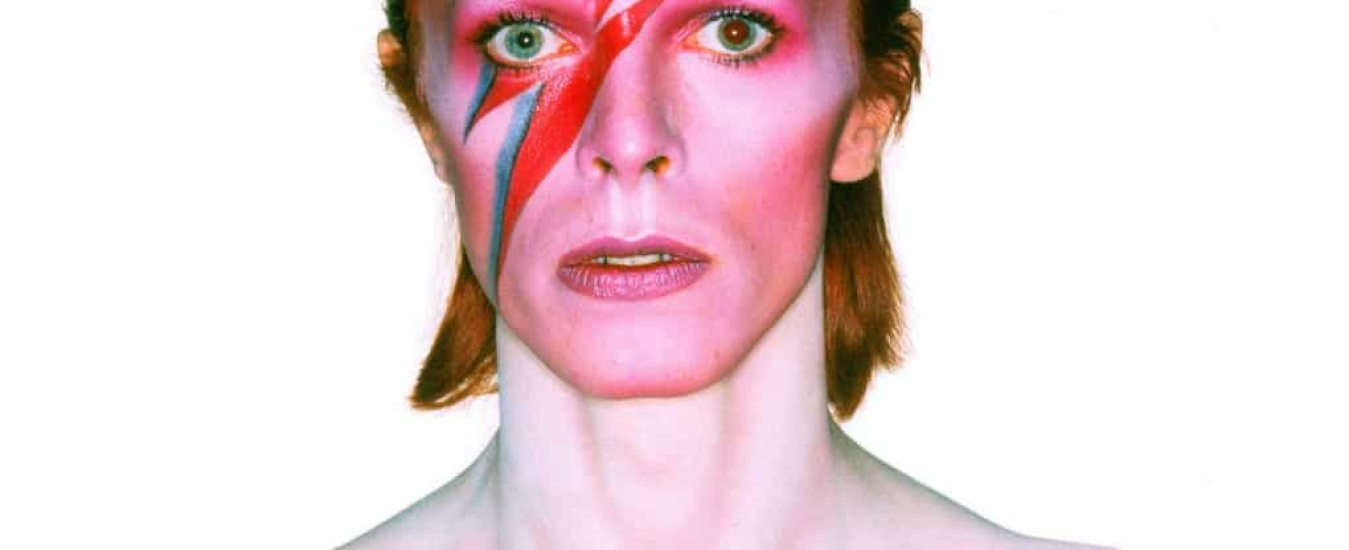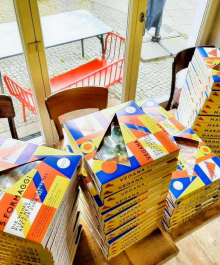

David Bowie Is – a retrospective exhibition of the artist’s life and career – opened last year at London’s V&A Museum to an extraordinary public and critical reception. One year later, the exhibition returns, this time to a location perhaps more poignant and relevant to Bowie’s life than even London: Berlin.
Martin Roth, the director of the V&A, said that Berlin was as important to Bowie as Hamburg was to The Beatles. Following a tumultuous and self-destructive period spent in Los Angeles, Bowie was burnt out, creatively blocked and basically riddled with drugs. He chose to move to Berlin to clean up and revitalise both body and creative spirit. In his own words, taken from an interview in 1978, “I got into a lot of emotional and spiritual trouble and needed a split.” Why did he choose Berlin? Probably for a multitude of reasons: Bowie was fascinated by the history of Berlin, specifically the Weimar Republic, and had a curiosity about the music coming from the city, in particular Krautrock – bands like Kraftwerk and Tangerine Dream. Late 70’s West Berlin was a hive of creative and anarchistic activity, but also a potential haven, somewhere one of the most recognisable faces in the world could disappear for a while, joining artists, mavericks, draft-dodgers and the many others who desired to melt into the fabric of a city torn in two. Bowie’s time spent living in Schöneberg resulted in what he called his ‘Berlin Triptych’ – three albums that are seen today as some of the finest of his oeuvre – Low, Heroes and Lodger.
Curators Victoria Broakes and Geoffrey Marsh were given unprecedented access to the ‘Bowie Archive’ of over 75,000 objects, and much of what is displayed the general public has never had an opportunity to see before, such as storyboards, handwritten set lists and lyrics as well as some of Bowie’s own sketches, musical scores and diary entries, revealing the evolution of his creative ideas. Perhaps most tantalisingly of all, Bowie fans are finally treated to excerpts of footage from the legendary Diamond Dogs tour, shot in Philadelphia.
If you were lucky enough to see last years London show, it is well worth a revisit. Thanks to Christine Heidemann, the curator of the show’s new Berlin section, 60 items have been added to the retrospective to give a broader idea of what went on during Bowie’s stint in the German capital. The Martin-Gropius Bau version certainly puts plenty of emphasis on Bowie’s Berlin years. Photos of he and his acquaintances throw a light on a very different Berlin to the one we see today, and there are paintings by German Expressionists who influenced Bowie, such as Erich Heckel, placed alongside some of Bowie’s own efforts from that time.
The show actually makes much of Bowie’s influences, drawing comparisons with J G Ballard, whose surrealistic prose talks of the inner and outer ‘landscapes of our lives’.
“The locus solus of reality exists only inside our own heads. The outer world, on the other hand, is created by advertising, by politics conducted as advertising, and is populated by characters more bizarre and incredible than any novelist could hope to create.”
Bowie the Showman understood the power of hype and propaganda well, having worked in an ad agency in his youth, just like Andy Warhol, another of Bowie’s influences, whom Bowie would play in the critically divisive film Basquiat.
Broakes and Marsh collaborated extensively with audio company Sennheiser to create a seamless audiovisual experience. At the entrance you are given a pair of headphones that provide music and narrative as you move between different parts of the exhibition. Going from one end of a room to another you might hear the strains of Starman slowly fade out to be replaced by fabled costume designer Kansai Yamamoto discussing his sartorial accomplishments or album artist Jonathan Barnbrook explaining why he defaced Heroes for Bowie’s latest album, The Next Day. I was expecting to have to fumble helplessly through tracks as one so often does in museums and guided tours, hearing totally inappropriate audio for the area of the exhibition I was in, but thankfully Sennheiser pre-empted my luddite uselessness and made the whole experience automatic, not traumatic. The pitch perfect journey reaches its climax in the wall of sound and vision room where you can remove your headphones and feast your senses on interspersed clips of TV footage and recordings of concerts projected across the walls, giving one at least a vague impression of what it was like to be at a Bowie concert. For those, like me, who find it harder to enjoy exhibitions when they are jam-packed full of other souls, having the headphones in helps to block out the people and focus better on the exhibits.
The curators state that they were less influenced by other exhibitions than live performance and theater when constructing the exhibition, and it shows. There is nothing mimimalistic about the Bowie retrospective. It is big, brash and full of artefacts, each room looking to pack a punch from the off. It is apt that an exhibition about a man who believes so fervently in the power of the stage and the staged is displayed in this way. For Bowie in his many metamorphoses has become bigger than his music. So many identity and costume changes perhaps threatened at some points in his career to overshadow his musical output, and while there are certainly plenty of musical objects on display at the Martin-Gropius Bau it is arguable that costumery and the schizophrenic nature of Bowie’s career ultimately take centre stage. In each and every room rows of faceless white mannequins bear down on us, robed in Bowie’s various guises, from his Ziggy Stardust days to his time as the Thin White Duke. For all his ever-changing identities the real Bowie has always been kept from the public, he has found creating art to be easier when projecting his ideas onto a character, rather than himself. The mannequins reflect this ultimate impersonality, as does the title of the exhibition, David Bowie Is, an unfinished sentence that has no object, but almost asks a question – David Bowie is…?
David Bowie Is
20 May – 10 August 2014
Martin-Gropius Bau
Niederkirchnerstrasse 7, 10963 Berlin
Tickets Available at: www.davidbowie-berlin.de
All images copyrighted by, and courtesy of the V&A Museum, The David Bowie Archive, The Duffy Archive, Sukita
Text: Louis Labron Johnson






